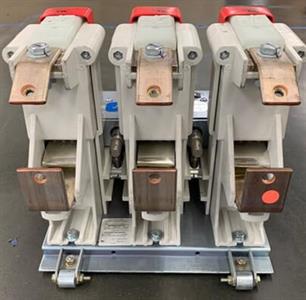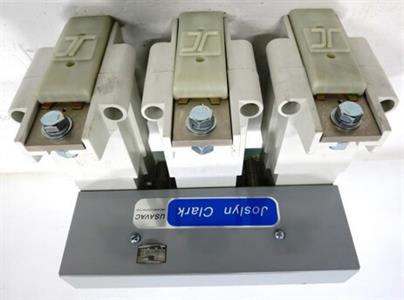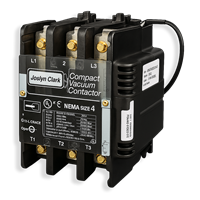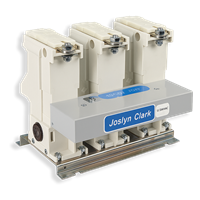Vacuum Contactor Mounting Considerations
Typical applications for vacuum contactors are wastewater pumping, oil pumping, power and distribution, mining, capacitor switching, and more. Vacuum contactors are mounted in confined cabinets where space is limited and specific clearance requirements are in place for safety. If you are replacing a contactor in an existing cabinet, your new equipment must be as small or smaller than the pre-existing contactor. Larger cabinets are more costly and occupy more space. Therefore, vacuum contactor mounting space is premium.
Keep in mind, to allow effortless access to the control module for easy installation and maintenance. It is also beneficial to have a direct line of sight to the visual indicator located on the control pack which gives an indication of when maintenance should be performed.
What are the Different Mounting Positions for Vacuum Contactors?
Most vacuum contactors are mounted base down or also known as floor mount. Roll-out configurations generally use a base down mounted contactor as well, A roll-out contactor assembly basically acts like a quick-disconnect providing easy access, simple maintenance for the entire cabinet, and reduces downtime.
However, some applications require versatility when it comes to mounting. In addition to base mount, our Joslyn Clark contactors can be mounted in any plane including panel/wall mount. This is beneficial in helping eliminate excessive wiring and reduces the amount of panel space needed. Base up (or upside down) is a unique mounting position, but necessary in some applications. In theory, there should be no adverse effects on a vacuum contactor mounted in this orientation and it should perform the same as if it was mounted base down.

Example of a vacuum contactor mounted in a roll out configuration

Example of a fixed mounted vacuum contactor
Does Mounting Orientation Affect the Performance?
Gravitational forces can affect the operation of a vacuum contactor depending on how it is mounted. For instance, if the contactor is mounted with the control module on top, gravity would work with the armatures for slightly better closing time and requiring less pull-in voltage. This could be beneficial in applications that would have trouble maintaining a stable voltage supply. Vice versa, mounting the contactor with the control module facing down could help in an application that requires a slightly faster opening time. All in all, there is no mounting orientation better than another. The proper mounting position for each vacuum contactor depends on the application and the contactor design.
What Should I Consider for Terminal Connections?
When connecting to the vacuum contactor terminals with wire, consider the space requirements for the wire bending radius. Overbending wires can cause stress connections and lead to potential electrical malfunctions in your application. Therefore, some applications require the use of stress cones. Stress cones need a large bending radius as the insulation keeps wires from bending. If the contactor is mounted upright, extra space is required to accommodate, but if the contactor is mounted sideways, it is a lot easier to connect with stress cones considering cables generally start from the bottom of the cabinet.
How to specify vacuum contactors for high altitude environments
What are switching transients and how to minimize them with vacuum contactors
CV Series Compact Vacuum Contactor
Joslyn Clark’s Compact CV Series Vacuum Contactors and Starters are ideal for tough industrial applications. The compact design provides flexibility for retrofitting air break contactors, thus enabling an existing application to continue with maintenance cost and down time eliminated. Voltage raging from 600V to 1500KV and current ratings up to 600A are available.Learn more »
MVC Series Medium Voltage Vacuum Contactor
The Joslyn Clark USAVAC medium voltage vacuum contactors are 3-phase motor contactors built for control and protection in medium voltage applications ranging from 2300V to 7200V. Current ratings of 200-1200 ampere, and motor ratings up to 7000 HP at 6600V are available.Learn more »




